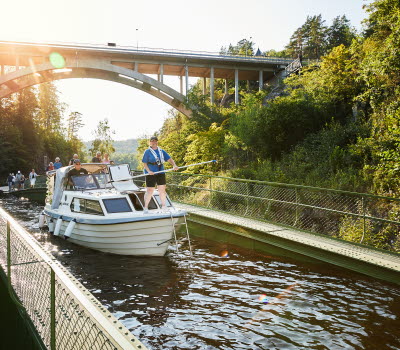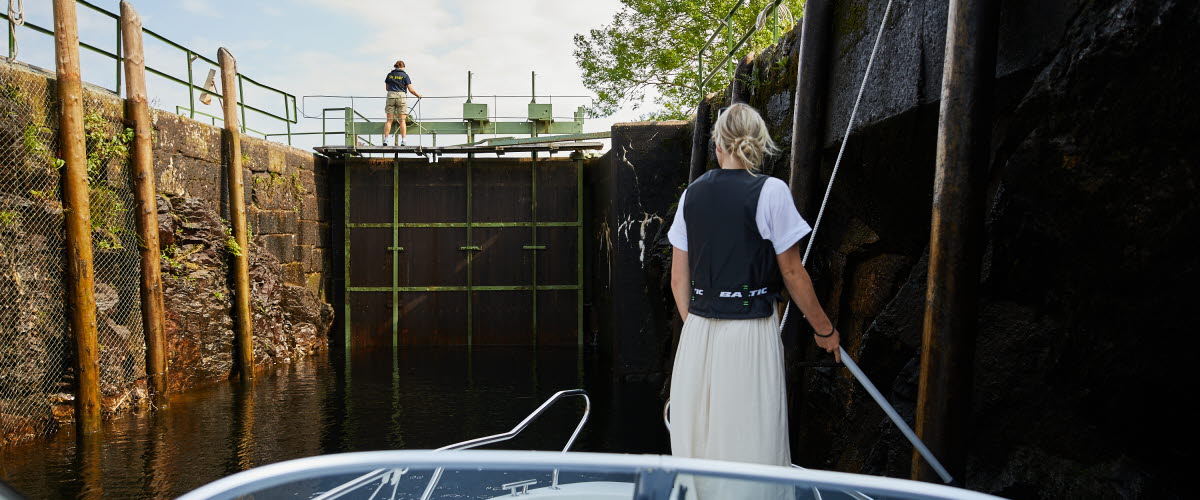Locking through
Locking through is not remotely difficult or challenging. Begin by getting the attention of the lock keeper. It is important to follow the lock keeper’s instructions. Remember that it is only the lock keeper who is allowed to operate locks and bridges.
Boats generally lock through in the order they call at the waiting jetty. At times, however, they may need to be re-ordered in order to most effectively utilise the capacity in the lock chamber.
How to lock through on the Dalsland Canal
The lock stations
Map and information about the 17 lock stations at the Dalslands canal.
Through the lock
It is easy to take the boat through the lock. Here we show you how it works and what happens when you are inside the lock. Remember, the lock keeper is always there to help you and answer any...
{{Name}}
{{shortDescription}}...
{{Description}}












